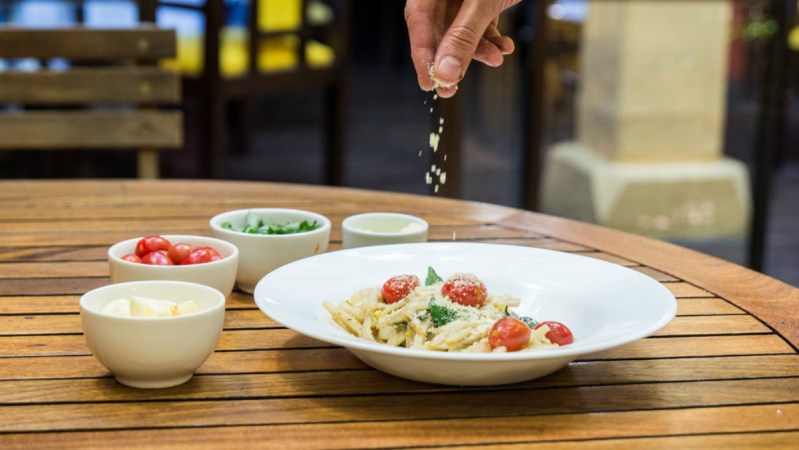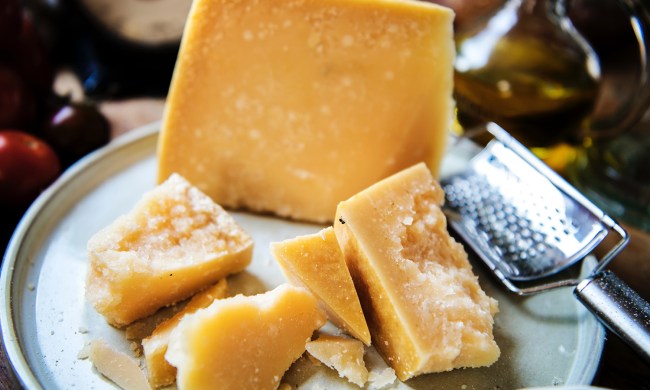
While zoodles (zucchini noodles) enjoy their heyday as a nutritious way to substitute veggies for traditional flour pasta, vegetable lovers, vegans, and Paleo diet followers will be excited to hear there’s a new noodle in town, and it’s made — of all things — from palm trees.
Say what?
Hearts of palm, which in their raw form look like un-fried, fat mozzarella sticks, are harvested from the inner core and growing buds of certain palm trees. These 100-percent edible cores are firm (like linguini noodles) and hyper nutritious. When cut and cooked the right way, it’s hard to tell you’re not eating pasta. Better still, the flavor is reminiscent of an artichoke, which is also great for your pasta plate.
Only a handful of companies have begun canning hearts of palm noodles for us to substitute in our spaghetti, lasagna, and stroganoff. Brazilian-based Harvest Palm is one, which now offers palm tree pasta to U.S. consumers after turning on a pair of traveling American brothers that went crazy over the taste and health benefits. Another is Palmini, which brought its pasta substitute to the investors on Shark Tank and accepted a $300,000 offer from Lori Greiner. Trader Joe’s also makes Trader Joe’s Heart of Palm Medallions.

So what’s all the hubbub about then, if not many people are producing them?
Hearts of palm pasta is only 15-20 calories per 75 gram serving (compare that to a cup of sauce-less penne, which has around 200 calories). This is because more than 90 percent of the vegetable is water, and it’s packed with fiber, making it a nearly calorie-free yet filling meal. To put this in perspective, it would only take two minutes of running to burn off a serving.
Counting aside, hearts of palm packs 4 grams of carbs per serving, is gluten-free, non-GMO, and contains zero sugar. You’ll also get a zing of potassium (one serving is equivalent to 10 percent of your daily recommended intake), and a boost of vitamin C, vitamin B6, calcium, magnesium, protein, and zinc (stellar for quick healing and aiding digestion.) Plus, it’s low in cholesterol.

The only “downside” is that one serving contains 26 percent of your daily recommended sodium intake. Ordinary pasta doesn’t come remotely close to that. However, hearts of palm is still notorious for being a health food, according to SELFNutritionData.
Now to the important question: How much does it actually taste like pasta? How much does any vegetable substitute taste like its real gluten inspiration?
The answer: enough.
The texture and appearance of palm tree pasta is much closer than other veggie spiral noodles like zucchini, beets, and sweet potatoes, however hearts of palm can have a strong smell. The simple fix: rinse very well and let the palm sit in your choice of milk for 15-30 minutes. Rinse again and you’ll find that the odor is diffused. (You can thank Palmini for this tip.)
Hearts of palm noodles also work in other noodle-based dishes (not just Italian!) like Pad Thai. For a more traditional recipe, try this Palmini and Homemade Pesto dish. One bonus of using hearts of palm instead of noodles is you won’t have to worry about limp, too-soft noodles if they’re cooked too long. All you need to do is warm up the canned palm and voila!


